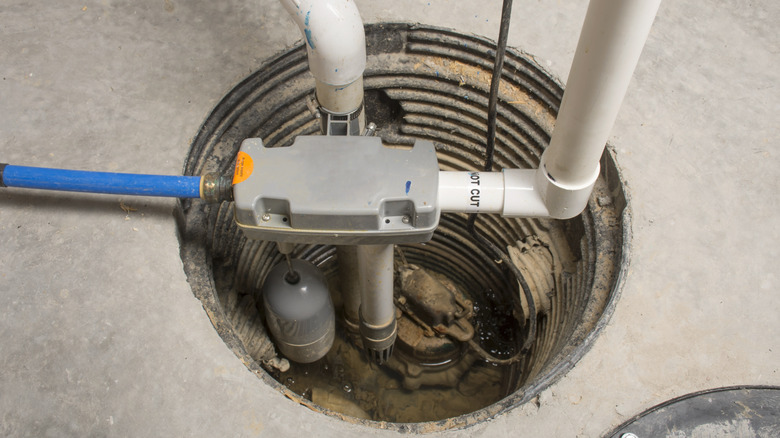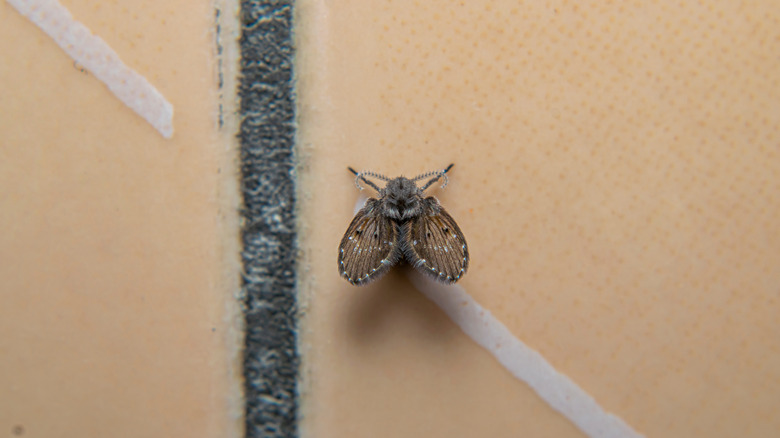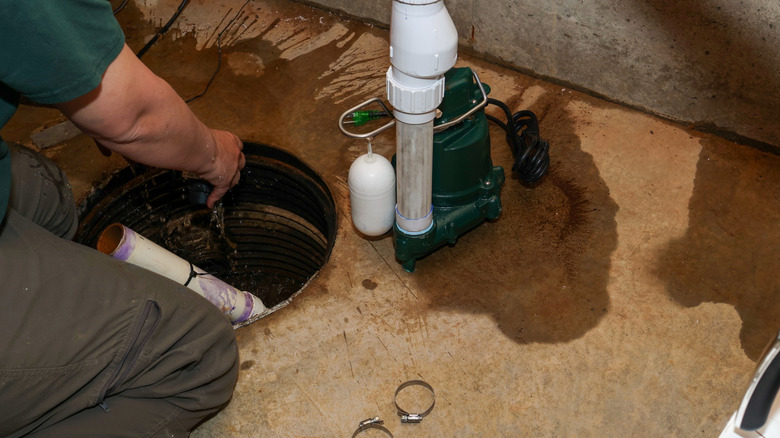How To Prevent Drain Flies In Your Sump Pump
There is something truly awful about going to wash your hands or take a shower and finding a bunch of small insects in your bathroom or kitchen. If you notice an abundance of little-winged creatures hopping and flying around, then you may have a drain fly infestation. These small insects have fuzzy wings that make them look similar to moths. While they don't bite or transmit diseases to humans, an infestation can be quite a nuisance. Drain flies can multiply quickly and may even cause allergies or asthma flare-ups for some people. These flies lay their eggs in wet environments where they have access to organic materials, meaning your home probably has multiple desirable locations. Though drain flies are typically found in kitchens and bathrooms near water sources, you might also find them breeding in your sump pump.
There are a few methods to easily get rid of drain flies, but when dealing with these insects in your sump pump specifically, the process is a bit different. They're attracted to stagnant water and organic materials, both of which can be found in your sump pump. In order to prevent them from entering it, you need to make the environment less appealing to them. You can achieve this by checking for and repairing any leaks and regularly cleaning your sump pump to remove organic material.
Deter drain flies by keeping your sump pump clean
An improperly functioning sump pump can result in stagnant water, which can attract drain flies. You should also test your sump pump before doing any cleaning, as attempting to clean it when it is not working correctly could cause further damage. To test your sump pump, fill the sump pump pit with a few gallons of water to activate the sump pump. It should turn on and drain. If you notice any issues, you should contact a plumber to take a look. If you are particularly handy, you could also learn how to DIY a sump pump repair. If there are no issues, you can proceed to cleaning.
To clean your sump pump and pit, start by unplugging your sump pump and protecting yourself from any contaminants in the water by wearing gloves, long sleeves, long pants, and shoes. Check for any maintenance instructions specific to your sump pump and follow them. The cleaning process will often involve removing the sump pump from the pit and cleaning it. This can be done by spraying with water, scraping with a plastic tool, scrubbing with a toothbrush, and even using a couple drops of dish soap with water or creating a mixture of equal parts of vinegar and water. Rinse thoroughly after cleaning.
Removing drain flies from your sump pump
Next, move on to the pit itself. Remove any dirt or debris, and then rinse it using water. You can also soak it with a disinfectant or a mixture of 2 parts warm water and 1 part vinegar before thoroughly rinsing it. Take note of any issues with the sump pump or pit throughout the cleaning process, looking for any issues that would need a professional's help. This could include damage to the sump pump or pit and any clogs in the sump pump or the discharge pipe. Then, you can secure everything back in place and test the sump pump again. You should deep clean and test your sump pump and pit at least once or twice per year, but you may want to do it more frequently to remove organic material and deter drain flies.
If you're currently dealing with a drain fly infestation, cleaning and sanitizing is also a good way to get rid of them. If sanitizing doesn't do the trick, you can use pesticides or get rid of them with natural products . While you may see drain fly solutions like using boiling water or baking soda or concentrations of bleach to kill the flies, all of these can be harmful to your sump pump and should be avoided. The safest method to remove and prevent drain flies while keeping your sump pump in prime condition is simply cleaning.


